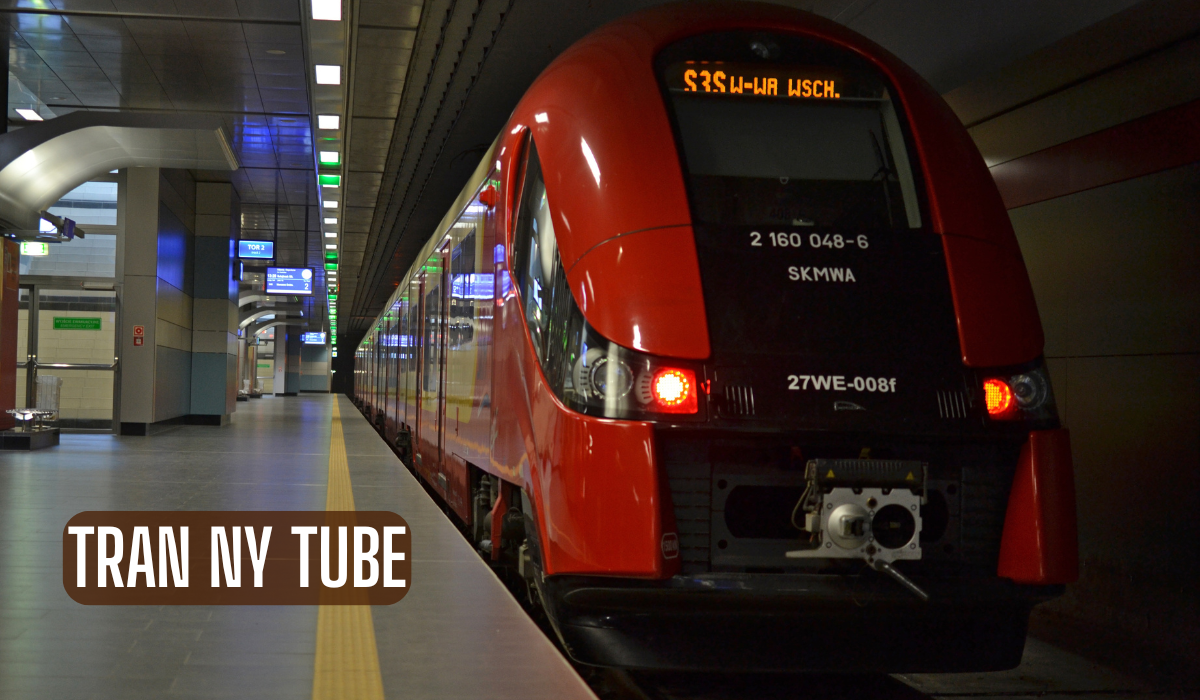In a world constantly on the move, the way we travel is evolving faster than ever before. At the forefront of this evolution stands a bold new concept: Tran Ny Tube. More than just a futuristic phrase, Tran Ny Tube represents a visionary leap in urban transit, blending the innovation of hyperloop systems with the sustainability goals of tomorrow’s smart cities.
What is Tran Ny Tube?
Tran Ny Tube is a conceptual high-speed, low-impact transportation system designed to revolutionize how people commute across urban and regional environments. Derived from the phrase “Transit New York Tube”, it draws inspiration from subway systems, bullet trains, and vacuum tube technology but breaks new ground in efficiency, speed, and environmental harmony.
The idea revolves around a network of aerodynamic pods traveling through near-vacuum tubes at speeds exceeding 500 mph. By reducing air resistance and using magnetic levitation, Tran Ny Tube could offer silent, ultra-fast transport cutting a New York-to-Boston trip to under 30 minutes.
How It Works
At its core, Tran Ny Tube is a pressurized tube infrastructure housing magnetically levitating passenger pods. Key components include:
- Vacuum Sealing: Reduces friction by removing most of the air within the tube.
- Magnetic Levitation (MagLev): Allows the pods to float and glide smoothly, with minimal mechanical resistance.
- AI Routing and Scheduling: Ensures optimized traffic flow and minimizes energy waste.
- Solar-Integrated Stations: Each station is equipped with green energy solutions, from solar panels to rainwater collection systems.
Environmental Impact
One of Tran Ny Tube’s most promising attributes is its potential to slash carbon emissions. Unlike air travel and car traffic, which contribute heavily to pollution, the tube system operates on clean energy sources. The infrastructure requires far less land disruption than traditional highways and rail, preserving ecosystems and urban space.
Potential Applications
- Urban Commuting: Imagine traveling from Brooklyn to Manhattan in under 2 minutes without a car, bus, or crowd.
- Regional Transport: Cities like New York, Philadelphia, and Washington D.C. could be linked by a single tube corridor, transforming business and leisure travel.
- Cargo Delivery: Tran Ny Tube could also function as a next-generation logistics network, enabling fast, automated delivery of goods between hubs.
Challenges and the Road Ahead
While the vision is exciting, practical hurdles remain: massive infrastructure investments, safety regulation, and public acceptance are major considerations. However, with governments increasingly prioritizing sustainable infrastructure and public-private partnerships gaining momentum, the road toward a real-life Tran Ny Tube is not as far-fetched as it once seemed.
Final Thoughts
Tran Ny Tube may be a futuristic concept today, but it embodies the direction our cities are heading toward smarter, faster, and greener transportation. As urban populations swell and the climate crisis deepens, innovation like this offers a beacon of hope. Whether as a thought experiment or a future megaproject, Tran Ny Tube challenges us to rethink what’s possible in motion.
Tran Ny Tube – Frequently Asked Questions
1. What is Tran Ny Tube?
Tran Ny Tube is a conceptual high-speed, low-emission transportation system based on vacuum tube and magnetic levitation technology. It aims to connect urban and regional areas with ultra-fast, sustainable travel pods moving inside sealed transit tubes.
2. Is Tran Ny Tube a real system or still a concept?
As of now, Tran Ny Tube is a visionary concept. It is inspired by emerging technologies like hyperloop and magnetic levitation trains, but it represents a unique and innovative approach to solving urban transit and environmental challenges.
3. How fast can Tran Ny Tube travel?
Projected speeds for Tran Ny Tube could exceed 500 miles per hour (800 km/h), depending on distance, route, and technical infrastructure. This speed is possible due to reduced air resistance and friction inside the vacuum tube system.
4. How is it different from subways or bullet trains?
Unlike subways or bullet trains, Tran Ny Tube:
- Uses low-pressure vacuum tubes to eliminate drag.
- Relies on magnetic levitation for silent, smooth travel.
- Can achieve much higher speeds with lower energy consumption.
- Is designed for both people and cargo transport in modular pods.
5. Is it environmentally friendly?
Yes. Tran Ny Tube is designed to operate on clean energy, such as solar and wind power. Its efficient design also minimizes land use, emissions, and noise pollution, making it a promising green alternative to traditional transport systems.
6. Where would Tran Ny Tube be built first?
While no confirmed locations exist yet, potential pilot routes could include high-density corridors such as New York to Boston or New York to Washington, D.C., where travel time and congestion are major concerns.
7. How safe is the Tran Ny Tube system?
Safety is a top priority. The sealed tube design limits external risks like weather or debris. Emergency protocols, airlocks, and redundant power systems would be key components of the infrastructure. Final designs would undergo rigorous testing and regulation before public use.
8. Can the Tran Ny Tube carry cargo?
Absolutely. Besides passengers, Tran Ny Tube could include automated cargo pods, revolutionizing how goods are moved between cities faster and with lower environmental impact than trucks or planes.
9. Will it be affordable for everyday commuters?
The goal is to make Tran Ny Tube accessible and affordable by leveraging clean energy, modular construction, and scalable technology. Pricing models could include subscriptions, public-private partnerships, or government-subsidized fares.
10. When will we see it in action?
The timeline depends on investment, political will, and technological advancement. If development begins within a decade, functional prototypes or short-distance lines could be operational in 15–20 years.

